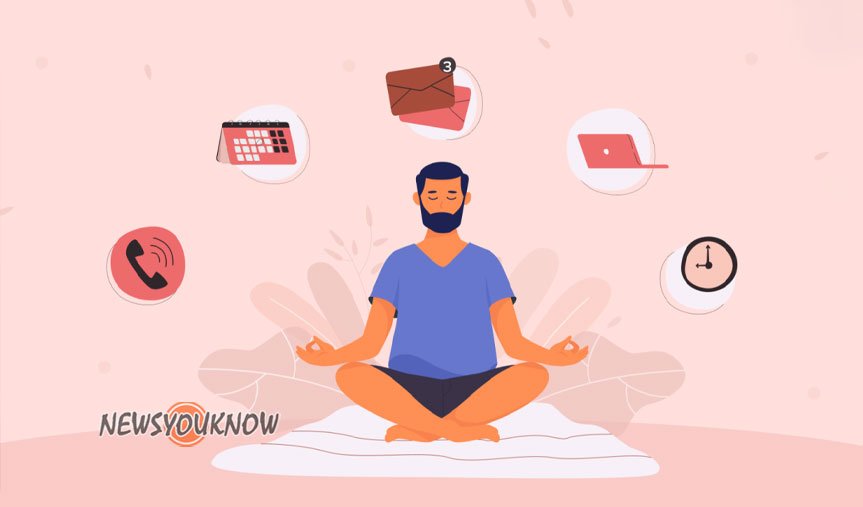Stress is an unavoidable part of life. We all encounter difficult situations that can leave us feeling overwhelmed or emotionally drained. Learning how to manage stress effectively is critical for maintaining both physical and mental health. By understanding the causes and effects of stress, as well as helpful management techniques, we can reduce its negative impacts and improve our overall wellbeing.
Effective Stress Management Techniques
Stress can be defined as the body’s reaction to harmful situations and emotional pressure. When we perceive a threat, whether real or imagined, our bodies activate a flight-or-fight response. Stress hormones like cortisol and adrenaline are released to boost energy, increase heart rate, and prime the muscles to react. Originally an evolutionary survival mechanism, this response is not as helpful for the complex emotional stresses of modern life. While essential for avoiding immediate bodily harm, stress becomes problematic when activated too frequently.
Managing stress effectively is vital for health and wellbeing. Chronic stress can weaken the immune system, disrupt digestion, lead to high blood pressure, and negatively impact nearly every system in the body. Mentally, frequent stress taxes our minds, hampers concentration, and contributes to anxiety and depression. By learning stress management strategies, we can reduce these physical and mental risks, while leading more balanced, productive, and happy lives overall.
Understanding Stress
To manage stress, it is helpful to understand that it exists in multiple forms. The three main types are:
Acute stress arises from immediate perceived threats. For example, narrowly avoiding a car accident can set heart racing from an acute stress reaction. Because the stressful situation quickly passes, acute stress does not cause significant harm.
Episodic acute stress occurs when frequent acute stress reactions pile up, often triggered by chaotic lifestyles. People prone to anger or anxiety attacks may be experiencing episodic acute stress.
Chronic stress persists over longer periods of time, whether due to lengthy struggles like poverty, family dysfunction, or traumatic experiences that linger psychologically. Health risks increase dramatically for those suffering from regular or unchecked chronic stress.
Understanding the common causes of stress can help us anticipate and manage potential triggers. Stress often arises from three key areas:
- Situational causes like work pressure, financial burden, major life changes, trauma, grief, injury, divorce, or loss of a loved one.
- Internal causes like pessimism, lack of assertiveness, unrealistic expectations, perfectionism, self-criticism, or negative self-talk habits.
- Environmental causes like noise pollution, traffic jams, overcrowding, extreme weather, or chronic sleep deprivation.
By reflecting on our unique stress triggers across these potential causes, we can gain more control over them through proactive stress management.
Effects of Stress on Health
Frequent or chronic stress can negatively impact health in various interrelated ways:
Physically, stress hormones signal the body to enter fight-or-flight mode, directing blood flow away from digestion and towards the muscles. Energy is burnt faster as the body prepares to react to perceived danger. In the short term, this helps us rise to meet challenges. However, chronic activation of the stress response keeps the body perpetually wound up, leading to headaches, muscle tension, chest pain, changes in sex drive, stomach irritation, and worsened skin conditions.
By elevating levels of cortisol and adrenaline over long periods, stress also contributes to heart disease, heart attacks, high blood pressure, and stroke. It can worsen asthma, arthritis, diabetes symptoms, and irritable bowel syndrome as well. Poor or disrupted sleep, common side effects of stress, only compound these issues.
Mentally, frequent stress floods the mind with negative thoughts, strains working memory, reduces attention span, and hampers concentration. This manifests as increased anxiety, depression, lack of motivation, and more. Stress even appears to physically alter brain structure over time, shrinking crucial areas like the prefrontal cortex.
Behaviorally, people under constant stress struggle with irritability, anger outbursts, overeating, drug or alcohol abuse, social withdrawal, recklessness, and problems managing responsibilities. Performance often suffers across work, academics, parenting, and interpersonal relationships as we instinctively narrow focus to immediate survival needs.
Learning to manage stress effectively protects all aspects of health. This begins by identifying common stress triggers in daily life.
Identifying Stress Triggers
To reduce daily stress levels through proactive coping mechanisms, we must first reflect on our unique stress triggers. Note any patterns around common sources of personal, work, and environmental stress:
- Workplace stress arises from high demands, long hours, micromanaging bosses, lack of autonomy, difficult coworkers, office politics, harassment, lack of opportunity, job insecurity, and uncertain futures. Monitor which work issues tend to stressful personally.
- Personal life stress spans family demands, children’s difficulties, arguments with loved ones, financial struggles, moving, disasters impacting home or valuables, divorces, deaths, caretaking for sick family members, and solo parenting.
- Environmental stresses like overcrowding, noise, air pollution, nighttime light pollution, extreme weather fluctuations, natural disasters, political unrest, crime, war, and chronic sleep loss can also overwhelm coping abilities.
While some sources of stress remain outside personal control, by identifying triggers we can still actively limit exposure and mitigate impacts through stress management techniques.
Stress Management Techniques
Many proven stress management skills and lifestyle changes can reduce anxiety levels, improve resilience against triggers, repair chemical balance, and boost overall health. Useful techniques include:
- Relaxation practices like breathwork, mindfulness meditation, yoga, tai chi, qigong, repetitive prayer, music therapy, art therapy and massage therapy can rapidly calm the body and mind while mitigating long-term impacts of stress. Simple deep breathing for five minutes daily makes a difference. Apps now provide free guided meditation as well.
- Time management reduces chaos and overscheduling-related stress. Planning thoroughly, saying no when needed, delegating tasks, pacing larger projects, and avoiding procrastination and distraction help us regain control of demanding schedules.
- Physical activity floods the body with mood-boosting endorphins while enhancing metabolism and circulation. Aim for 30 minutes daily, even light activity like walking helps. Further benefit comes from social exercise like team sports.
Alongside specific stress management techniques, certain lifestyle choices effectively lower stress levels over time as well.
Healthy Lifestyle Choices
Adopting healthy everyday habits serves as preventative medicine against the impacts of stress by keeping mind, body, and spirit balanced, fueled, and well-rested. Key choices include:
- Balanced nutrition provides energy and building blocks necessary for combating stress biologically. Low blood sugar, dehydration, poor digestion, and inflammation compound issues. Eat more greens, anti-inflammatory turmeric, antioxidant-rich berries, probiotic foods like yogurt, and omega-3s from fish. Avoid excess caffeine, trans fats, sugary and processed foods, and refined carbs that cause energy crashes.
- Adequate, regular sleep not only reduces mental fog and physical fatigue, but further protects cardiovascular and immune functioning per research. Insufficient sleep prevents tissue repair and hormone regulation necessary to cope with daily stress. Work towards 7-9 hours nightly, sticking to consistent bedtimes and wake times.
- Avoiding substance abuse prevents us from self-medicating stress with potentially addictive drugs or alcohol. While momentarily calming, ongoing abuse can become its own unrelenting source of stress. Additionally, hangovers, withdrawal symptoms, altered thinking patterns, and lasting neurological changes compound pre-existing issues even further.
Healthy lifestyle choices help establish an inner “homeostasis” or equilibrium, making us less reactive to outer turmoil.
Seeking Social Support
Connecting with others satisfies our core need for belonging critical to wellbeing. Building strong social support networks provides safe spaces for processing difficult emotions that arise from stressful events. By voicing struggles we face externally, their burden is lessened internally. Support groups introduce new perspectives while reducing feelings of isolation in hardship.
Even everyday interactions matter. Spending pleasurable, present-focused time laughing, embracing, and engaging with loved ones and pets leads to lasting neurological and biological changes. Our capacity for positivity, insight, and inner calm grows. In essence, making deposits into emotional savings when times are good allows withdrawal of support during times of heightened stress.
For those undergoing intensely stressful experiences, communicating effectively becomes especially important. Voicing feelings early prevents resentment buildup, strengthening bonds for times ahead. Setting boundaries against criticism or attempts to “fix” everything instead maintains self-confidence and control.
Remember, adding fulfilling social rituals like family dinners, outings with close friends, weddings, concerts or communal meals makes all the difference in resilience.
Cognitive Behavioral Strategies
Much stress is self-generated through cycles of negative thinking. Reframing thought patterns, attitudes, and behaviors accordingly helps regain emotional control. Useful cognitive behavioral techniques include:
- Identifying automatic negative thoughts like “I’m such a failure” allows evaluation of their validity. Are they overly dramatic or black-and-white? Simply noticing extreme thinking makes room for more balanced, nuanced perspectives.
- Avoiding perfectionism reduces self-applied pressure. Perfection does not exist – demanding it of ourselves or others creates unnecessary suffering. We must nurture self-compassion to allow human imperfection.
- Setting reasonable personal goals creates a sense of control amidst outer chaos through incremental progress and regular accomplishment. However, beware not to overschedule or medicalize normal sadness, as this causes further stress.
- Practicing present-moment focus anchoring us in the here and now rather than future worries or past regrets that cannot be changed. Regular mindfulness meditation facilitates this while enhancing peace and perspective.
- Learning constructive problem-solving improves responding to negative situations rationally versus reacting emotionally. Defining the problem, brainstorming solutions, assessing best options, and trying them out beats helpless worry every time.
Small cognitive shifts accumulate into greatly reduced stress and anxiety over time. Be patient with yourself in the process.
Work-Life Balance
As work demands escalate, balancing professional and personal realms is no longer a luxury but a necessity. Without equilibrium, one area of life inevitably suffers at the cost of the other. Resentments build on both sides. Overcommitting at work leads to missing important family events, skipping friend meetups, neglecting self-care, and emotional absence with loved ones at home. Bringing office anger or workload worries home strains relationships there.
Establishing work-life balance begins by identifying top priorities in each area, then fiercely protecting them through proactive boundaries. Useful strategies include:
- Defining non-negotiable key tasks and responsibilities at work and home to focus efforts on what matters most in each sphere. Schedule remaining time accordingly while avoiding overbooking.
- Setting communicative boundaries on after-hours contact, weekends, and vacation days. Psychologically detach from the office outside working hours. Be present with family.
- Taking regular breaks for simple pleasure, creativity, and social connection every day. Short respites dissolve stress to boost motivation and performance.
- Outsourcing secondary tasks through virtual assistants, neighborhood teenagers, house cleaners and laundry services. Delegate where possible.
- Starting earlier and stopping on time creates margins rather than allowing work to consistently bleed into personal hours.
By honoring both personal health and relational health, work-life balance reduces strain and prevents burnout. The two spheres support rather than continue robbing energy from one another.
Mindfulness and Stress Reduction
The practice of mindfulness – calmly yet curiously observing thoughts, emotions and sensations without judgement – reduces maladaptive psychological and biological stress reactions, honing attention regulation in the process.
Regular mindfulness practitioners display heightened calm, focus and cognitive flexibility. Neural pathways shift as the prefrontal cortex strengthens while amygdala reactivity lessens. Metabolism, heart rate variability, digestive functioning, and sleep quality improve as well.
We need not meditate for hours cross-legged like a monk to gain benefit. Even five minutes daily rewires the brain’s habitual stress reactions. Over time, enhanced attentional control allows conscious response vs unconscious fight-or-flight reactions to daily upsets. Researchers find success applying mindfulness in schools, prisons, hospitals and workplaces to manage everything from kids ADHD to caregiver fatigue.
Useful techniques include:
- Breath awareness while holding neutral posture
- Body scans to release chronic muscle tension
- Mindful movement like walking, stretching or yoga
- Sensory meditations on tastes, sounds, or other senses
- Open awareness of thoughts and emotions without attachment
- Mindful art, music or writing fostering insight and flow states
- Integrating present-moment focus into routine tasks like eating, driving or phone calls counteracts mind wandering
By repeatedly returning attention to the here and now with patience and compassion, mindfulness soothes frazzled nerves. Try it as part of a comprehensive stress management approach for resilient peace of mind.
Professional Help
While many manage stress independently through lifestyle changes, support groups, app-guided programs, or self-help workbooks, turning to counselors or psychiatrists becomes vitally important in certain situations:
- If you feel emotionally numb, paralyzed or trapped in harmful behaviors like addiction, self-harm, suicidal ideation, violence, or self-neglect, immediately connect with a professional rather than waiting for motivation. They guide you towards inner resources and/or needed medications if applicable.
- Therapy helps process trauma, grief, domestic abuse, anxiety, depression, chronic illnesses, disability, caretaking struggles and major life transitions that independently feel emotionally overwhelming at times. Counseling facilitates self-understanding and concrete coping strategies tailored to your unique situation.
- Psychiatry offers clinical diagnosis and pharmaceutical options like antidepressant or anti-anxiety medications that rebuild balance for psychological disorders or severe neurotransmitter dysfunction not otherwise treatable through lifestyle shifts alone. Complementary talk therapy boosts mental health further.
While leaning on social support networks greatly helps weather stressful periods, getting professionally treated is no personal failure. Instead, it offers the best chance for full recovery by targeting root causes of suffering. Prioritize self-care in difficult times.
Stress Management in the Workplace
Employers play a key role in maintaining employee health, engagement, retention and productivity through promoting institutional stress resilience. Best practices include:
- Encouraging open communication about workload without fear of retaliation promotes collaborative solutions vs having teams silently shoulder overwhelming responsibilities alone until quitting.
- Clarifying roles and priorities reduces ambiguity-related tension while preventing duplication of efforts that bleed into nights and weekends.
- Offering flexible schedules provides better work-life balance, allowing adjustments as family needs evolve.
- Discouraging email communication outside working hours lets people fully recharge mentally.
- Modeling humane schedules and boundaries at leadership levels gives employees “permission” to do the same.
- Providing mental health insurance benefits, employee assistance programs, onsite counselors, stress management or mindfulness workshops, and general wellness initiatives conveys institutional support that outlives any single employee’s tenure.
Investing in positive stress-prevention policies reduces turnover costs while protecting institutional knowledge and fostering conscientious organizational culture from the top down.
At the same time, employees must educate themselves on available workplace resources to utilize them. Look into counselling offerings, chat helplines, benefits consultations, workshops/classes, legal and financial resources, support groups, and health programs year-round rather than just in crisis mode. Discovering these solutions before reaching a breaking point makes all the difference.













No Comment! Be the first one.